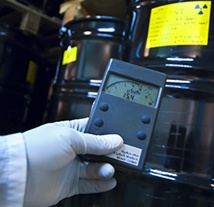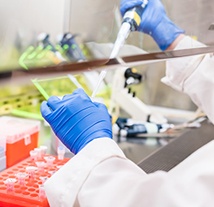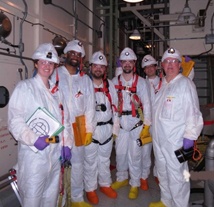By: Ashok Ghose Dastidar, PhD, MBA, Vice President, Dust & Flammability Testing and Consulting Services, Fauske & Associates, LLC (FAI)
Dust explosions are a serious hazard in the process industries. They have led to the injuries and fatalities of plant workers as well as  destruction of capital equipment and business interruption. They occur in a wide range of industries such as agricultural, metal processing, fine chemical, woodworking and pharmaceuticals to name just a few. The “dusts” we generally speak about in these incidents include powders that are being handled or manufactured but also byproducts of a manufacturing process. Fauske & Associates, LLC (FAI) have been involved in combustible dust hazards testing and consulting since the early 1980’s. We were one of the first labs in North America to have a spherical 20-L chamber for dust cloud explosibility testing. Today, after over 30 years, we are the preeminent laboratory testing facility in North America with world class facilities. We have grown from one 20-L chamber to four spherical units. We also have five Minimum Ignition Energy (MIE) testing apparatus as well as a one-cubic meter spherical explosion chamber. We perform hazard characterization using ASTM, ISO, VDI, IEC and CEN testing methods in our ISO 17025 accredited facility. However, we are not only a commercial testing facility. We do host and sponsor academic research as well.
destruction of capital equipment and business interruption. They occur in a wide range of industries such as agricultural, metal processing, fine chemical, woodworking and pharmaceuticals to name just a few. The “dusts” we generally speak about in these incidents include powders that are being handled or manufactured but also byproducts of a manufacturing process. Fauske & Associates, LLC (FAI) have been involved in combustible dust hazards testing and consulting since the early 1980’s. We were one of the first labs in North America to have a spherical 20-L chamber for dust cloud explosibility testing. Today, after over 30 years, we are the preeminent laboratory testing facility in North America with world class facilities. We have grown from one 20-L chamber to four spherical units. We also have five Minimum Ignition Energy (MIE) testing apparatus as well as a one-cubic meter spherical explosion chamber. We perform hazard characterization using ASTM, ISO, VDI, IEC and CEN testing methods in our ISO 17025 accredited facility. However, we are not only a commercial testing facility. We do host and sponsor academic research as well.
During the 2014-2015 academic year we hosted three Post-Doctoral Students from the University of Ostrava in the Czech Republic conducting research on comparing dust explosibility parameters measured in the 20-L chamber with those measured in the 1-m3 chamber. This year, FAI have committed ourselves to a three-year research study headed up by Dr. Paul Amyotte from Dalhousie University in Nova Scotia, Canada under a collaborative research grant from the Natural Sciences and Engineering Research Council of Canada.
Research will be conducted on a specific class of combustible dust known as marginally explosible dusts. These materials pose a unique challenge when designing dust explosion prevention and mitigation measures; while they appear to explode during laboratory-scale tests, their explosion characteristics in industrial-size facilities are less certain. Comprehensive investigation of this uncertainty is only possible by means of concurrent testing using standard laboratory-scale equipment and specialized larger-scale test chambers.
These marginally explosible dusts fall into two categories. The first one is materials that are susceptible to Overdriving. Overdriving is a dust cloud combustion phenomenon where the intensity of the pyrotechnic ignition source used to initiate the explosion in the 20-L test chamber may actually be enhancing the dusts combustibility. This can occur by either heating up the entire dust cloud making it more susceptible to ignition/autoignition or by directly burning the dust in the flame volume of the igniter (the “firecracker” used to initiate these experiments can take up to 50% of the volume of the 20-L test chamber). The second category is materials susceptible to underdriving. Underdriving can occur when the vessel walls of the the 20-L test chamber act as a heat sink and prevent/hinder dust cloud combustion propagation by quenching it out.
These phenomena have been observed in the 20-L chamber by several researchers. These two phenomena are not present in the 1-m3 chamber. The enormous size of the test vessel means that the ignition source (“firecracker”) only occupies a small portion of the chamber thereby minimizing the chance of preheating the dust cloud or that burning in the igniter volume will generate any appreciable pressure. Additionally, the enormity of the chamber means that wall quenching is minimized and dust cloud combustion propagation is allowed to progress and develop. The focus of the current study will be to characterize these phenomena. We, at FAI, are excited to begin this research as the results could help guide best practices on explosion mitigation strategies for these types of materials.
For more information regarding research or dust hazard analysis (DHAs), please contact Ashok Ghose Dastidar, dastidar@fauske.com, 630-887-5249.









